New York City Ballet's Winter Season continues:
Personality
by Leigh Witchel
 A program with “Square Dance,” “Liebeslieder Walzer” and “Stars and Stripes” shows about as much range as one can hope for in a single choreographer. There were so many links and contrasts in this evening at New York City Ballet, titled “Essential Balanchine,” that it’s hard to settle on a dominant connecting thread. All the works are from the late City Center period; “Stars” and “Square Dance” from the great ’57-8 season that also produced “Agon” and “Gounod Symphony.” “Liebeslieder” had its premiere a few years later in 1960. READ MORE
A program with “Square Dance,” “Liebeslieder Walzer” and “Stars and Stripes” shows about as much range as one can hope for in a single choreographer. There were so many links and contrasts in this evening at New York City Ballet, titled “Essential Balanchine,” that it’s hard to settle on a dominant connecting thread. All the works are from the late City Center period; “Stars” and “Square Dance” from the great ’57-8 season that also produced “Agon” and “Gounod Symphony.” “Liebeslieder” had its premiere a few years later in 1960. READ MORE
The Return of the Dybbuk
by Susan Reiter
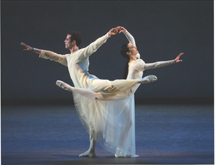 So much drama and tension went into the making of “Dybbuk,” the 1974 collaboration between Jerome Robbins and Leonard Bernstein that they had initially envisioned soon after they first joined forces for “Fancy Free” 30 years earlier. The recent books on Robbins, in documenting the ballet’s genesis and rehearsal period, emphasize the clash between Bernstein’s more dramatic approach and Robbins’ most abstract one. Bernstein was in favor of having a brief synopsis of the play appear in the program, and wrote one; Robbins did not want it. He may have given the dancers the S. Ansky play to read, but he pointedly did not assign character names to the central couple. READ MORE
So much drama and tension went into the making of “Dybbuk,” the 1974 collaboration between Jerome Robbins and Leonard Bernstein that they had initially envisioned soon after they first joined forces for “Fancy Free” 30 years earlier. The recent books on Robbins, in documenting the ballet’s genesis and rehearsal period, emphasize the clash between Bernstein’s more dramatic approach and Robbins’ most abstract one. Bernstein was in favor of having a brief synopsis of the play appear in the program, and wrote one; Robbins did not want it. He may have given the dancers the S. Ansky play to read, but he pointedly did not assign character names to the central couple. READ MORE
San Francisco Letter 21
San Francisco Ballet, Programs I and II
by Rita Felciano
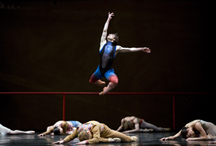 San Francisco Ballet’s first program of the 2007 season looked like it had been assembled by a committee charged with making sure that everyone would go home happy. So the lovers of classicism got—albeit in second hand form—Balanchine’s serene “Divertimento No. 15”. Those who like their ballets lite with a dollop of sentiment could relish Jacques Garnier’s “Aunis,” and those who prefer edginess to sentiment could cheer William Forsythe’s “Artifact Suite.” Everyone did go happy—the performances were that fine. READ MORE
San Francisco Ballet’s first program of the 2007 season looked like it had been assembled by a committee charged with making sure that everyone would go home happy. So the lovers of classicism got—albeit in second hand form—Balanchine’s serene “Divertimento No. 15”. Those who like their ballets lite with a dollop of sentiment could relish Jacques Garnier’s “Aunis,” and those who prefer edginess to sentiment could cheer William Forsythe’s “Artifact Suite.” Everyone did go happy—the performances were that fine. READ MORE
Trisha Brown: "Déjà vu all over again"
by Paul Parish
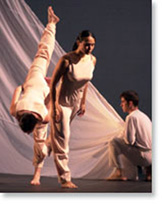 Trisha Brown's company performed in Berkeley this past week-end, showing extraordinary calm, ease, silkiness of action, and dexterity while moving through her incalculably inventive combinations. There is no one anywhere who finds movement with the never-zoning-out attention to the logic of where-we're-at-now that Brown possesses. The moves that fired my mirror-neurons most were long balances on one leg, where the other leg snaked and curled around, challenging the integrity of the standing leg (until finally the leg would circle round the back and the rest of the body would have to go with it — it's kind of a fouetté action, and would usually not be over after a single turn but would elaborate in further lacy noodlings). There was also a lot of work on all fours and below the bottom of grand plié; some, not much, upside down. READ MORE
Trisha Brown's company performed in Berkeley this past week-end, showing extraordinary calm, ease, silkiness of action, and dexterity while moving through her incalculably inventive combinations. There is no one anywhere who finds movement with the never-zoning-out attention to the logic of where-we're-at-now that Brown possesses. The moves that fired my mirror-neurons most were long balances on one leg, where the other leg snaked and curled around, challenging the integrity of the standing leg (until finally the leg would circle round the back and the rest of the body would have to go with it — it's kind of a fouetté action, and would usually not be over after a single turn but would elaborate in further lacy noodlings). There was also a lot of work on all fours and below the bottom of grand plié; some, not much, upside down. READ MORE
NYCB's New Beauties; the "Sleeping Beauty" Seminar
by Dale Brauner
 Ever since Carlotta Brianza created the leading role in “The Sleeping Beauty” at 23, young dancers have attempted to surmount the treacherous, but classical, demands of Aurora in the Marius Petipa-choreographed classic. This January, two young dancers of the New York City Ballet made their debuts as the young princess in artistic director Peter Martins’ production, while another was the understudy. The trio, principal dancer Megan Fairchild and soloists Sterling Hyltin and Ana Sophia Scheller (the understudy), were joined by soloist Daniel Ulbricht in a panel discussion which explored the challenges of taking on one of the most famous and significant ballerina roles in the classical ballet tradition for the first time. Joan Quatrano, director of volunteers and program resources, moderated the seminar. READ MORE
Ever since Carlotta Brianza created the leading role in “The Sleeping Beauty” at 23, young dancers have attempted to surmount the treacherous, but classical, demands of Aurora in the Marius Petipa-choreographed classic. This January, two young dancers of the New York City Ballet made their debuts as the young princess in artistic director Peter Martins’ production, while another was the understudy. The trio, principal dancer Megan Fairchild and soloists Sterling Hyltin and Ana Sophia Scheller (the understudy), were joined by soloist Daniel Ulbricht in a panel discussion which explored the challenges of taking on one of the most famous and significant ballerina roles in the classical ballet tradition for the first time. Joan Quatrano, director of volunteers and program resources, moderated the seminar. READ MORE
Washington Ballet's ¡Noche Latina!
by Alexandra Tomalonis
 The Washington Ballet’s midwinter program, ¡Noche Latina!, was intended as a celebration of Latino culture and succeeded; the evening was as cheerful and energetic as a lively party with nearly as much music (from Mexico, Bolivia and Cuba) as dancing. A Mariachi band played out front before the show and during the first intermission, and there was more music — much more music — played with infectious zest by Celso Duarte / Jarocho Fusion during the “pause” between the second and third works on the program. The dancers looked terrific and were extremely well–rehearsed. It hardly seemed to matter that two of the works were insubstantial, and the one first–rate piece — Paul Taylor’s “Piazzolla Caldera” — fell short of the mark. READ MORE
The Washington Ballet’s midwinter program, ¡Noche Latina!, was intended as a celebration of Latino culture and succeeded; the evening was as cheerful and energetic as a lively party with nearly as much music (from Mexico, Bolivia and Cuba) as dancing. A Mariachi band played out front before the show and during the first intermission, and there was more music — much more music — played with infectious zest by Celso Duarte / Jarocho Fusion during the “pause” between the second and third works on the program. The dancers looked terrific and were extremely well–rehearsed. It hardly seemed to matter that two of the works were insubstantial, and the one first–rate piece — Paul Taylor’s “Piazzolla Caldera” — fell short of the mark. READ MORE
Susan Marshall: Still "Cloudless"
by Susan Reiter
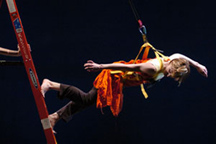 Generally, choreographers are ready to move on to the next project once their current one has premiered, and audiences are usually lured by the promise of seeing someone’s latest, newest work. But Susan Marshall’s “Cloudless” is such an accomplished piece of work that it certainly merited the two-week return engagement that DTW was enlightened enough to provide. READ MORE
Generally, choreographers are ready to move on to the next project once their current one has premiered, and audiences are usually lured by the promise of seeing someone’s latest, newest work. But Susan Marshall’s “Cloudless” is such an accomplished piece of work that it certainly merited the two-week return engagement that DTW was enlightened enough to provide. READ MORE
Opera Dancing: “Journey to Reims” and “Falstaff”
Kirov Opera and Orchestra of the Maryinsky Theater
by George Jackson
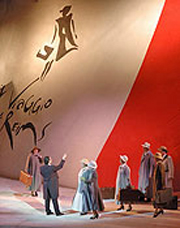 “Music that laughs” is what critic David Johnson, my seat neighbor for the two Kirov Opera performances, said about Gioacchino Rossini’s score for “Il viaggio a Reims”. What he meant was that humor resides not just in Luigi Balochi’s libretto or Alain Maratrat’s direction of the action but also in the very juxtaposition of notes, the sly orchestrations and the dynamics of this music. READ MORE
“Music that laughs” is what critic David Johnson, my seat neighbor for the two Kirov Opera performances, said about Gioacchino Rossini’s score for “Il viaggio a Reims”. What he meant was that humor resides not just in Luigi Balochi’s libretto or Alain Maratrat’s direction of the action but also in the very juxtaposition of notes, the sly orchestrations and the dynamics of this music. READ MORE